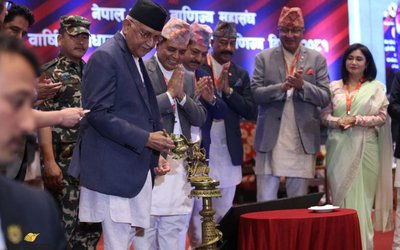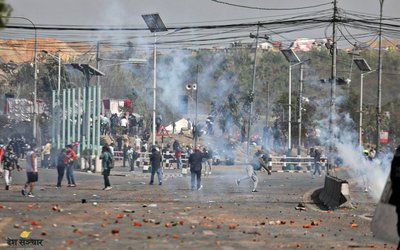More on Economy




With power short supply from current hydropower plants, Nepal has been facing difficulties to meet the power need. At a time when the construction of hydropower is consuming time, solar plants can be a quicker alternative.
Realizing the immediate needs, Asian Development Bank, which has been supporting Nepal’s power sector for long, has announced a $20 million grant to spur private sector investment in the utility-scale solar power.
The funding should ensure installation of at least 25 megawatts (MW) of solar power by 2018 but, more importantly, it is expected to provide a business model that can be replicated and scaled up elsewhere in the energy-strapped South Asian nations.
The grant will be used to finance the difference between private sector cost of producing utility-scale solar power and the minimum price that the Nepal Electricity Authority is willing to pay for the power. This is the first time that Nepal has ever used the so-called “viability gap” funding.
The ADB’s package is another milestone to encourage the private sector to invest in solar energy.
“Providing some financial security to the private sector should draw more private investment into this critical sector in Nepal and, in doing so, reduce pressure on government finances,” said Aiming Zhou, Senior Energy Specialist at ADB’s South Asia Regional Department. “And once the private sector better understands Nepal's solar sector, I would expect them to seek investment opportunities elsewhere in Nepal or indeed the region.”
“Nepal has been suffering chronic power shortages, with peak demand of 1,444 MW far outpacing installed capacity of 885 MW. Only 65% of the country’s households have access to electricity. Hydropower has, so far, been a mainstay of the country’s clean energy supply, but solar power is an ideal complement, particularly during the low-water season. Until now, however, private sector investment has largely been in micro- and mini-grid solar power, with utility-scale plants of 4 MW or more attracting little private sector attention,” said a press release issued by the Asian Development Bank.
Now, companies will be able to bid for development of solar systems through an international competitive bidding process, with power purchase agreements awarded on the basis of the best offtake prices. The funding under the grant will be payable on the first day of operation of the solar system, up to end June, 2022. Bidding is expected to start in the first quarter of 2017 and last around 6 to 12 months.
The $20 million grant is being financed by the Scaling Up Renewable Energy in Low Income Countries Program (SREP) of the Climate Investment Funds (CIF) administered by the Asian Development Bank (ADB). It will form part of the $440.50 million South Asia Subregional Economic Cooperation Power System Expansion Project, which kicked off in January 2015.
Similarly, the government has announced last year the per unit base price for solar electricity. According to National Energy Crisis Prevention and Electricity Development Decade, 2016 (NECPEDD 2016), the government set the benchmark price of Rs.9.61 per unit of solar electricity supplied to national grid on avoided cost. The 92-step strategy passed by the Cabinet provides comprehensive steps to increase our electricity production to 10,000MW in the next decade.
NEA has already issued letters of intent to 17 solar companies with capacity of 25 MW and their price range is Rs. 8.35 to Rs.9.45. NEA has issued the letter of intent following the announcement of the guideline, which says the government will provide subsidy to NEA to meet the gap of current power purchasing rate with and solar. The current NEA’s power purchasing rate ranges from 8.40 and 4.80 per unit depending on seasons.
With the announcement of the packages for solar, NEA has identified 22 substations of 11 KV or 33 KV in different parts of Nepal to connect with the solar energy.
“Of course, Nepal needs some alternative energy sources to mix with hydro. However, solar energy is costly,” said reporter Sachin Gautam, who has been covering energy sector for long.
With ADB's new announcement, private sector will have good incentives to invest in solar power, which can help the country meet the current deficit in the central grid.





